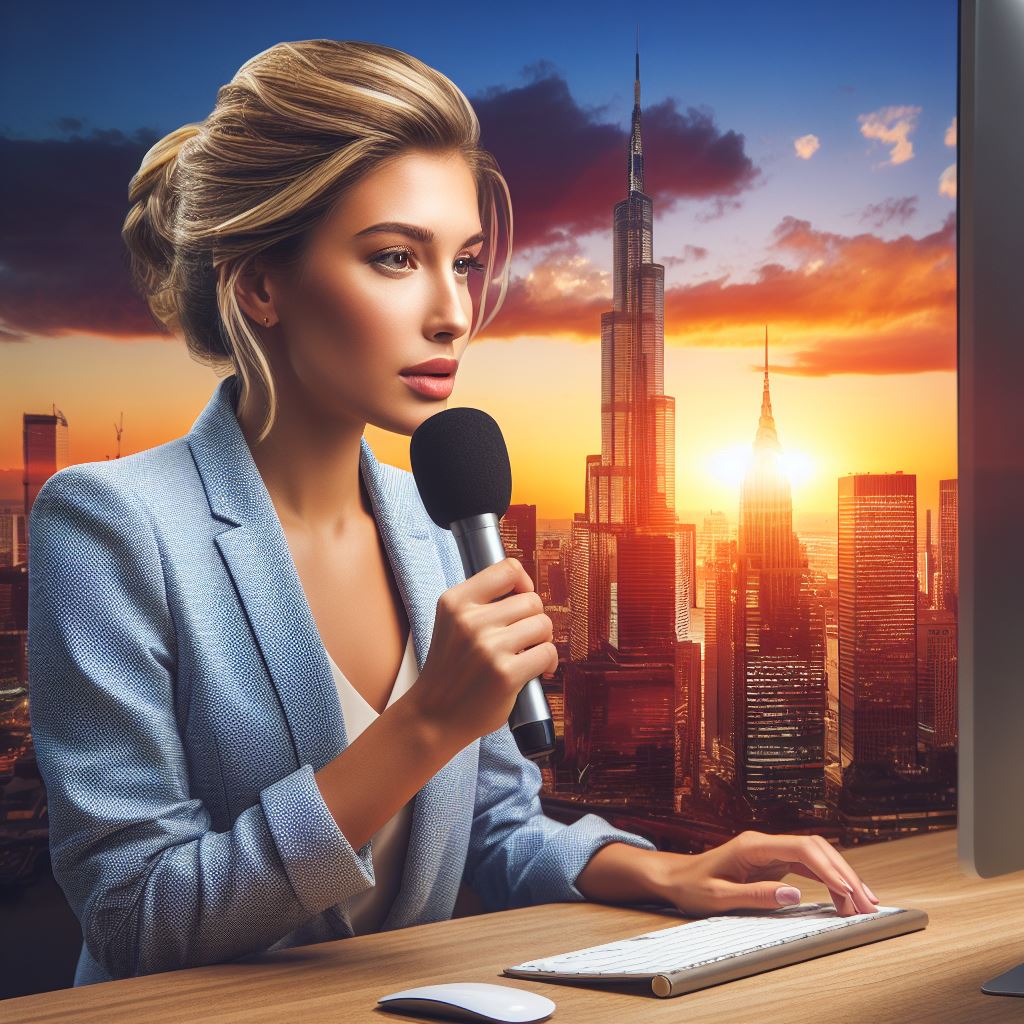Introduction
A. Overview of the Topic
The US editing landscape thrives on diversity, reflecting a mosaic of voices, perspectives, and experiences.
B. Importance of Diversity in the US Editing Landscape
Diversity enriches creativity, fosters inclusivity, and ensures a comprehensive representation of ideas and cultures.
C. Thesis Statement
This section explores how diversity, encompassing varied backgrounds and viewpoints, fundamentally reshapes the US editing landscape.
In a country known for its cultural tapestry, diversity isn’t just a buzzword; it’s a dynamic force shaping editorial excellence.
Stay tuned as we unravel the intricate ways in which diverse voices contribute to the evolving narrative of editing in the United States.
The Influence of Ethnic Diversity on Editing
A. Different editing styles and perspectives based on cultural backgrounds
- Editors from diverse ethnic backgrounds bring unique editing styles and perspectives.
- Cultural influences shape how editors approach the revision and improvement of written content.
- This diversity leads to a range of editing techniques tailored to specific audiences and communities.
- For instance, a Latinx editor may focus on making language more inclusive and representative of their culture.
- In contrast, an Asian editor may emphasize clarity and conciseness, influenced by their heritage.
B. Incorporation of diverse voices and experiences in editing decisions
- Editors recognize the value of incorporating diverse voices and experiences in their editing process.
- By doing so, they ensure that the content resonates with a broader audience.
- Editors from different ethnicities can identify potential bias and work towards mitigating it.
- They bring unique perspectives that challenge the status quo and promote inclusivity and understanding.
- This inclusion can lead to more authentic, accurate, and relatable content.
C. Examples of successful editorial projects driven by diversity
- In a literary magazine, an editor from an Indigenous background highlighted underrepresented voices.
- This inclusion increased the visibility of Indigenous writers and enhanced the magazine’s diversity.
- In a news publication, a team of editors from varied ethnic backgrounds improved coverage of international events.
- Their diverse perspectives enriched the content and avoided a one-sided narrative.
- In book editing, an African-American editor contributed to the accurate representation of cultural nuances.
- This attention to detail resonated with readers and led to positive reviews and increased sales.
In short, ethnic diversity plays a significant role in shaping the editing landscape in the United States.
Editors from diverse backgrounds bring different styles, perspectives, and experiences to their work.
This leads to a more inclusive and representative editing process that caters to specific audiences.
By incorporating diverse voices, editors can challenge biases, promote inclusivity, and create content that resonates with a broader audience.
Examples of successful editorial projects demonstrate the positive impact of diversity on the quality and authenticity of content.
Embracing diversity in editing ensures a richer and more accurate representation of the diverse communities we live in.
Read: Job Market Overview: Technical Writer Opportunities in the USA
Gender Diversity in the Editing Field
In the editing field, gender diversity plays a crucial role in shaping the industry and bringing about positive changes.
This section will explore the challenges faced by women in the industry, the progress towards gender equality in editing roles, and the benefits of having gender diversity in editing.
A. Challenges Faced by Women in the Industry
- Limited opportunities: Women often struggle to find equal opportunities for advancement in the editing field.
- Gender bias: Women may face biases and stereotypes that undermine their skills and competencies as editors.
- Pay inequality: Women may experience lower pay compared to their male counterparts for the same editing positions.
- Lack of representation: Women may find it challenging to see themselves represented in leadership roles within the editing industry.
- Work-life balance: Balancing work and family responsibilities can be particularly challenging for women in editing roles.
B. Progress Towards Gender Equality in Editing Roles
- Educational initiatives: Efforts are being made to encourage women to pursue education and careers in editing.
- Training programs: Organizations provide training programs to enhance women’s skills and improve their chances of success in the industry.
- Networking opportunities: Networking events and platforms create spaces for women editors to connect with industry professionals.
- Advocacy and mentorship: Organizations and individuals offer support and mentorship to help women overcome barriers in their editing careers.
- Increasing representation: Initiatives are being taken to increase representation of women in leadership positions within the editing field.
C. Benefits of Having Gender Diversity in Editing
- Broader perspectives: Gender diversity brings a range of different viewpoints and approaches to the editing process.
- Enhanced creativity: With diverse perspectives, editors can bring fresh and innovative ideas to their work.
- Improved decision-making: Gender-diverse teams can make more informed and balanced decisions in the editing process.
- Increased empathy: Editors from different gender backgrounds can better understand and empathize with diverse audiences.
- Positive work environment: Embracing gender diversity fosters inclusivity and creates a supportive work environment for all.
In fact, gender diversity is essential in shaping the editing industry and bringing about positive changes.
While women in the editing field face challenges, progress is being made towards achieving gender equality in editing roles.
Embracing gender diversity not only benefits individuals but also leads to collaborative and creative editing processes.
Read: Understanding the Different Niches in Technical Writing
Enhancing Cultural Sensitivity through Diversity
A. Handling sensitive topics and cultural nuances in editing
- Editors must approach sensitive topics with cultural awareness and respect.
- An understanding of cultural nuances helps avoid misinterpretations or offensive language.
- Researching and consulting diverse sources can provide a comprehensive understanding.
- Editors should be open to feedback from individuals who may be affected by sensitive topics.
Embracing diversity in the editing landscape is essential for enhancing cultural sensitivity.
Editors must approach sensitive topics with care and respect, considering cultural nuances to ensure accurate and respectful representations.
Researching and consulting diverse sources can provide a comprehensive understanding of different perspectives.
Editors should be open to feedback and learn from individuals who may be affected by these topics, continuously improving their knowledge and approach.
B. Avoiding cultural biases and stereotypes in the editing process
- Editors must be cautious not to perpetuate cultural biases or stereotypes in their work.
- Awareness of unconscious biases can help eliminate them from the editing process.
- Utilizing diverse perspectives ensures a well-rounded and accurate representation of different cultures.
- Editors should challenge their own assumptions and constantly educate themselves about different cultures.
Furthermore, cultural biases and stereotypes must be actively avoided in the editing process.
Editors should be aware of their own unconscious biases and work towards eliminating them.
By utilizing diverse perspectives, editors can ensure a well-rounded and accurate representation of different cultures.
Challenging assumptions and regularly educating oneself about different cultures is vital to producing inclusive and respectful content.
C. Importance of diverse editors in providing accurate and inclusive representation
- Diverse editors bring unique perspectives and insights that can enrich the editing process.
- They can identify cultural inaccuracies or misrepresentations that may be overlooked by others.
- By including diverse editors, a broader range of experiences and voices can be represented in the final product.
- Accuracy and inclusivity are crucial in fostering understanding and appreciation of diverse cultures.
The presence of diverse editors is invaluable in providing accurate and inclusive representation.
Their unique perspectives and insights can enrich the editing process, identifying cultural inaccuracies or misrepresentations that may be overlooked by others.
Transform Your Career Today
Unlock a personalized career strategy that drives real results. Get tailored advice and a roadmap designed just for you.
Start NowBy including diverse editors, a broader range of experiences and voices can be represented in the final product.
This ultimately contributes to fostering understanding and appreciation of diverse cultures within the readership or audience.
In a nutshell, enhancing cultural sensitivity through diversity is essential in the editing landscape.
Handling sensitive topics with cultural awareness, avoiding biases and stereotypes, and including diverse editors are vital practices.
Embracing diversity ensures accurate and respectful representations, fostering understanding, and promoting inclusivity in the US editing landscape.
Read: Skills and Qualifications: Becoming a Technical Writer in the U.S.

Diversity and Language Editing
A. Impact of Multilingual Editors on Language Accuracy and Localization
- Multilingual editors play a crucial role in ensuring accurate language usage and localization.
- They possess a deep understanding of different languages, allowing them to identify errors and inconsistencies.
- These editors can bridge the gap between different cultures and languages, enhancing the effectiveness of written content.
- Their expertise in localization helps businesses reach diverse audiences and establish a global presence.
- Multilingual editors contribute to preserving the cultural nuances and authenticity of the text they edit.
B. Benefits of Having Editors Fluent in Different Languages
- Editors fluent in different languages bring cross-cultural perspectives, enriching the editing process.
- They can accurately translate phrases, idioms, and cultural references that may be lost in literal translations.
- Such editors ensure that the intended meaning and tone of the content remain intact.
- By understanding diverse linguistic patterns, they can craft engaging and culturally sensitive narratives.
- The inclusion of different language fluencies expands the editor’s toolkit and strengthens their overall skillset.
C. Ensuring Inclusivity Through Accessible and Clear Language Editing
- Language editing that considers inclusivity makes content more accessible to diverse audiences.
- Editors play a critical role in eliminating biases, stereotypes, and discriminatory language from written material.
- They ensure that different cultural perspectives are respectfully represented in the content.
- Clear language editing focuses on simplifying complex ideas, making content easier to understand for all readers.
- Editors ensure that language choices do not exclude or marginalize any particular group.
In review, the editing landscape in the United States is shaped by diversity, particularly in relation to language editing.
Multilingual editors have a significant impact on language accuracy and localization.
Their fluency in different languages enables them to bridge cultural gaps and enhance the effectiveness of written content.
Having editors fluent in multiple languages brings several benefits, including the ability to accurately translate idioms and cultural references.
Furthermore, language editing plays a crucial role in promoting inclusivity by eliminating biases and ensuring clear and accessible content for diverse audiences.
Embracing diversity in language editing is essential for creating content that respects and includes all individuals.
Read: The Rise of Technical Writing: Historical Context in the USA
Breaking Barriers for Underrepresented Groups
A. Advancements for minority groups in the editing field
- Increasing representation: Efforts to diversify the editing landscape have resulted in increased opportunities for minority groups.
- Diversity initiatives: Many organizations have implemented programs to actively recruit and support underrepresented individuals.
- Mentorship and support networks: Providing guidance and mentorship to minority editors has proven instrumental in their professional development.
- Recognizing talent: The industry is gradually recognizing the value of diverse perspectives and actively seeking out talented editors from diverse backgrounds.
B. Overcoming challenges faced by marginalized groups
- Bias and discrimination: Marginalized groups often face bias and discrimination, hindering their access to equal professional opportunities.
- Lack of resources: Limited access to resources such as education, technology, and networking platforms further marginalizes these groups.
- Stereotypes and assumptions: Preconceived notions about the capabilities and skills of minority editors can lead to their exclusion from mainstream editing projects.
- Microaggressions: Subtle forms of discrimination, such as microaggressions, can create a hostile work environment for underrepresented editors.
C. Importance of inclusivity and equal opportunities in the editing landscape
- Broader perspectives: Inclusive editing teams bring a wider range of viewpoints that enrich the storytelling process and enhance the quality of content.
- Reflecting society: The editing landscape should accurately represent the diverse makeup of society to ensure authentic and relatable storytelling.
- Breaking stereotypes: Providing equal opportunities allows marginalized groups to challenge stereotypes and showcase their talent and skills.
- Social responsibility: The industry has a responsibility to dismantle systemic barriers and provide equal opportunities for all aspiring editors.
To summarize, diversity initiatives, mentorship, and recognition of talent are breaking barriers for underrepresented editors.
However, challenges such as bias, lack of resources, and stereotypes still persist.
It is crucial that the editing landscape becomes more inclusive and provides equal opportunities to foster broader perspectives, reflect society, break stereotypes, and fulfill its social responsibility.
Only by embracing diversity can the editing field truly thrive and accurately represent the richness of human experiences.
Conclusion
A. Recap of the main points discussed
Throughout this blog section, we have explored how diversity shapes the US editing landscape.
We have discussed the changing demographics of editors and their impact on the industry.
B. Emphasizing the significance of diversity in shaping the US editing landscape
It is crucial to emphasize the significance of diversity in shaping the US editing landscape.
With diverse voices and perspectives, the editing process becomes more inclusive and representative.
C. Final thoughts on future prospects and advancements in the field
Looking forward, there are promising future prospects and advancements in the field of editing.
As diversity continues to be valued and promoted, the industry will evolve to better reflect the varied experiences and backgrounds of its audience.
Overall, diversity plays a vital role in shaping the US editing landscape.
It enhances creativity, fosters understanding, and allows for more meaningful and accessible content.
[E-Books for Sale]
The Big Book of 500 High-Paying Jobs in America: Unlock Your Earning Potential
$19.99 • 500 High-Paying Jobs • 330 pages
Explore 500 high-paying jobs in America and learn how to boost your career, earn more, and achieve success!
See All 500 High-Paying Jobs of this E-Book
1001 Professions Without a Degree: High-Paying American Jobs You Can Start Now
$19.99 • 1001 Professions Without a Degree • 174 pages
Discover 1001 high-paying jobs without a degree! Unlock career tips, skills, and success strategies for just $19.99!




